EXCLUSIVE — Crafting the VFX of World of Warcraft: Dragonflight
Apr 05, 2023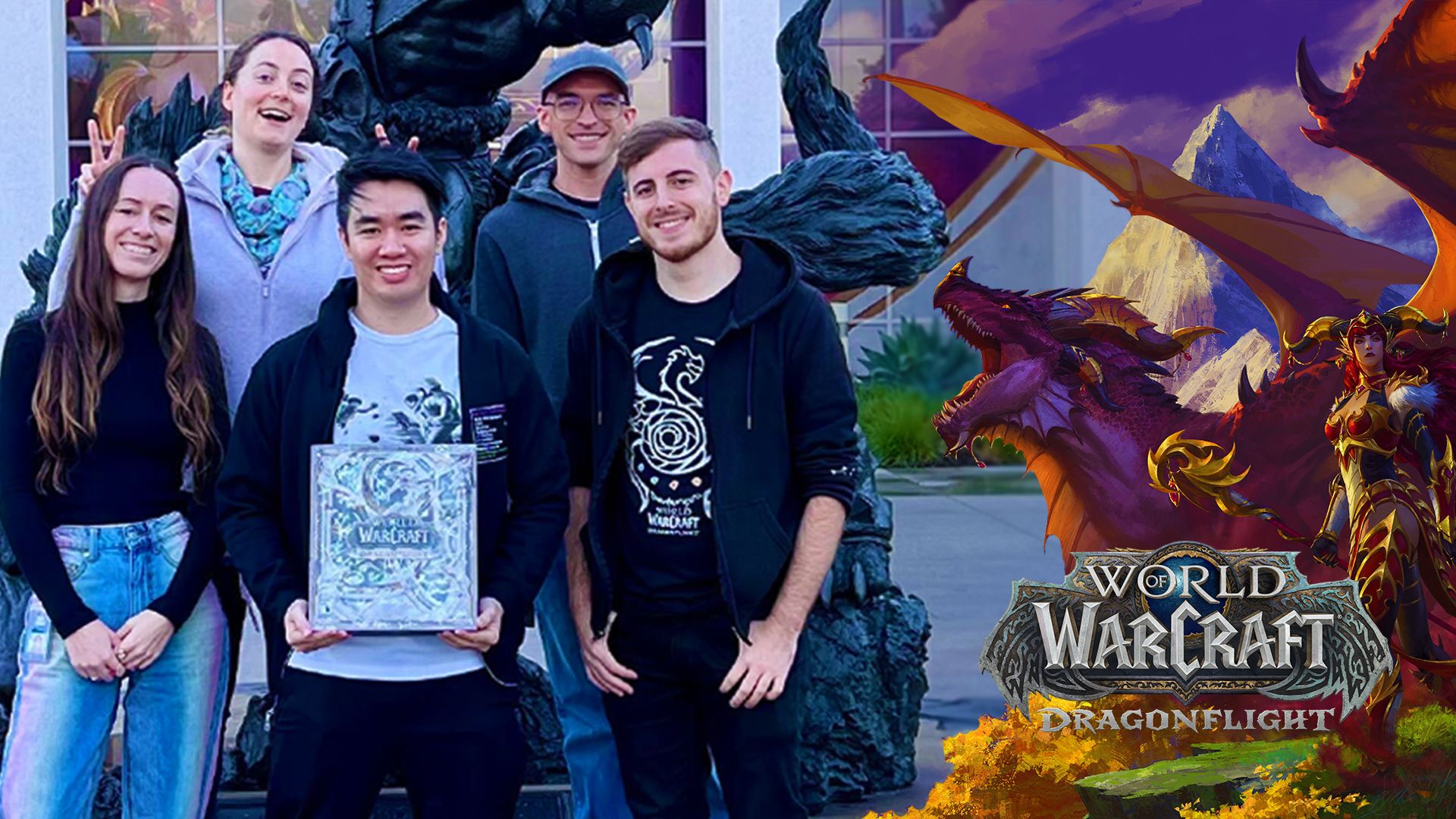
Blizzard's VFX team shares the ins-and-outs of working on the iconic WoW franchise and the studio's latest release.
Recently we had the pleasure of sitting down and chatting all things VFX with the team at Blizzard Entertainment who recently worked on one of their beloved franchises - World of Warcraft.
Blizzard Entertainment, based in Irvine, California, is known for creating some of the most popular and critically acclaimed video games of all time. Some of those titles include Diablo, StarCraft, Overwatch and the beloved Warcraft series.
This brings us to one of Blizzard's biggest releases yet, the incredible expansion to the iconic World of Warcraft series, World of Warcraft: Dragonflight.
 Image: VFX team photo at the orc during the Dragonflight launch celebration.
Image: VFX team photo at the orc during the Dragonflight launch celebration.
We chatted with Lead VFX Artists, Sarah Carmody and Kali Goss, and the VFX team that helped bring the game to life. This conversation was enlightening to say the least. Whether you’re looking to one day work at a studio, start your own, or just interested in the process of how these games are made - there’s some extremely helpful information throughout this interview!
Be sure to check out each of the artists ArtStation profiles to see breakdowns of their effects!
Share a bit about your VFX career. How long ago did you start making VFX? How did you get your start?
I started my VFX career at the end of the Summer in 2021 when I decided to shift into this part of game development. I had been focusing on tech art and environmental art in my education and had an undergrad internship at a VFX company in Boston, but it wasn’t until working on my thesis for my MFA that I had any real exposure to or interest in making effects. I had reached out to Sarah and asked how to get started making game effects, and fast forward through the pandemic to when I finally started following her advice to just go out and create. I followed a lot of different tutorials; some worked, others did not. Eventually, I found myself working my first industry position here at Blizzard!
A little over seven years ago is when I was first employed as a Visual Effects Artist, but Visual Effects is not what I studied in. My degree is in Transmedia, which is the fusion of traditional fine art with more digital practices such as digital installation art with motion controllers, sensors, projectors, etc. As a result, I’d been working in Unity producing game-adjacent installations a few years prior to my first studio job. Once I graduated, I spent some time putting together a game for Steam Greenlight. It wasn’t very good, just an infinite runner, but it was enough to showcase some of my painting and animation skills. From there I was hired on at Dire Wolf Digital, who at the time supported Elder Scrolls: Legends, the Pokémon TCG, and Eternal. I bumped around a bit between those different projects before landing on Eternal as their main VFX artist.
I started dabbling in VFX in Unreal Engine back in 2017, and from there hopped between learning a bit of Houdini and Cascade. Once I was comfortable with those programs, I started taking VFX and animation classes at Gnomon, which helped me build my initial portfolio before I was hired by Naughty Dog for my first VFX job.

I've been making VFX for games for 10 years and making art professionally for 13. I was originally a math major when I started college and then shifted to graphic design, worked as a multimedia designer/motion graphics artist, went back to art school for 3D, taught myself to code, and started making games. I also got involved in indie dev communities, participated in many game jams, and got my first job in games making VFX for slots at High 5 Games. After that, I worked at ArtCraft making FX for the MMORPG, Crowfall, and then Kabam where I worked on Disney Mirrorverse and a mobile top-down shoot-em-up. In 2021, I joined the WoW team and have never had more fun making FX!
I started as a Tech Artist on Project Titan back in 2010. Around a year later I would start working with Julian Love who introduced VFX to me and I fell in love with it. I had a few TA opportunities with Diablo III to help their Tech Art team (which was where FX were created back then) and then eventually went over to the Heroes of the Storm team where FX and tech art were separate roles.
I have been working in the world of VFX professionally for almost a decade. I went to the Art Institute of Santa Monica to study game art and design, where my primary focus was environment art. My first position was called “Technical Artist” but wasn’t a traditional Technical Artist role. I found in small shops that tech art often meant working on everything. I would assist with UI, 3D, and 2D Asset creation, and would own FXs for whatever project I was on. This continued at the next small shop I worked at and it wasn’t until I started at a larger studio that I was just an FX artist.
Like just about everyone, I also did not set out to be a VFX artist. I had a loose desire to be a 3D Animator for animated films, and I was able to get an internship with Sony Imageworks while in college. I wanted to like it so badly, but I didn’t have enough patience or passion for it to enjoy the process. Then, with no particular aim of joining the gaming industry at the time, I did several animation internships with a local game studio in my hometown of Camarillo, CA. That was more my speed! I got a bit into Tech Art there too, and when I graduated, that studio ultimately hired me as an FX Artist. Over time, I fell in love with the craft and applied to Blizzard on a whim almost 8 years ago!

What was your favorite part about working on the Dragonflight expansion?
Katie McAllister:
It’s honestly hard to choose but overall getting to work on some bronze dragon VFX was pretty special. Getting so much exposure to their different color palettes and established behaviors has been super fun.
Greg Tapper:
With so much creative freedom, I had a blast working on our water, bronze dragon, and green dragon magic kits. That said, my favorite part of being an FX artist on this team and expansion was collaborating with other disciplines! There's nothing more rewarding than collaborating with someone you don't usually get to work with, and you both hype each other up to make something truly special for the players.
It was fun seeing the environment and characters evolve over time, and how my effects fit into it all. Sometimes the effects we create are made in a vacuum with no context, so it’s always a surprise to see how it’s implemented!
Kali Goss:
You don't get many opportunities to help set the visual direction for a new class in WoW. It was a fantastic experience working on Evokers and the entire team creating the class were a mix of amazingly talented artists, designers, engineers, sound, QA, and production folk. It was a unique experience that I am so happy to say I was a part of.
Sarah King:
I enjoyed making kits for Dragonflight. It gave me an opportunity to create a lot of effects and really drill in and understand a set of FXs. The main kit I was a part of was fire. Someone else had established the rules for fire and it was fun to explore how it would work and look in different situations. Then you would get another surprise when you see how designers use it in the world. It was like getting to discover what fire can do again through the eyes of another person.
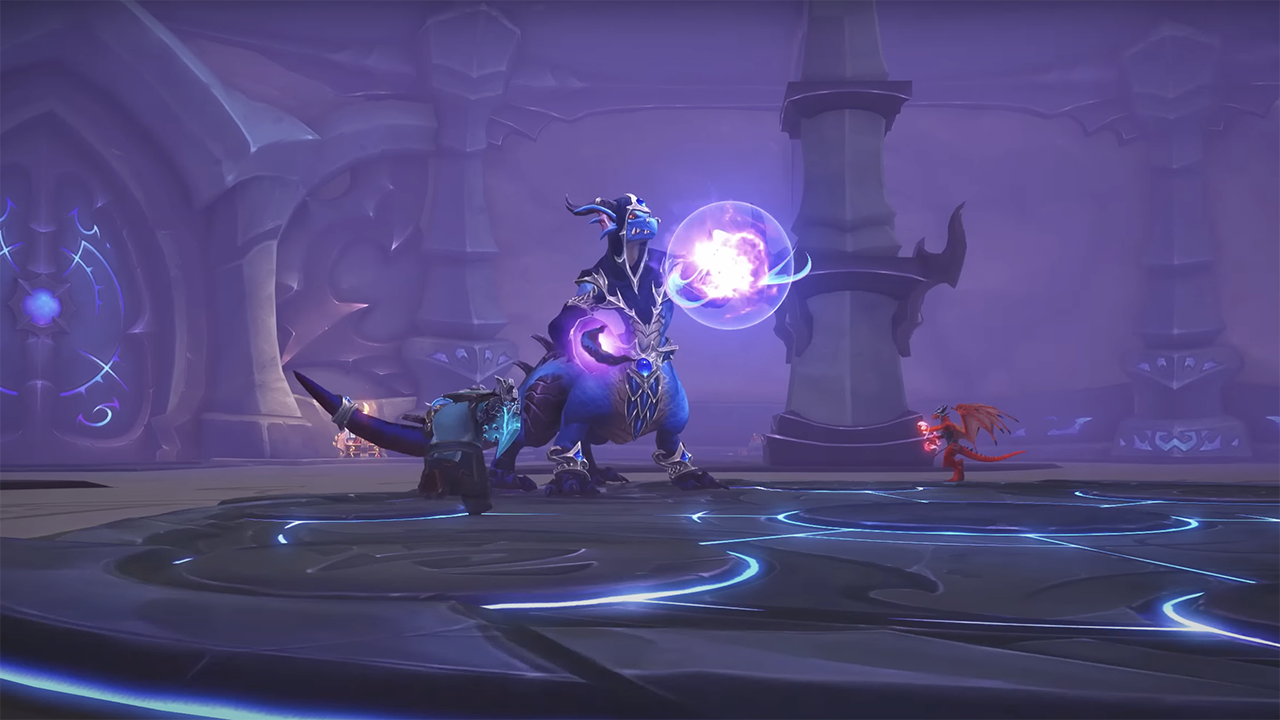
Is there a particular effect you made, or a challenge you conquered, that you're really proud of?
Max Anderson:
If I had to pick a favorite effect I made for the launch of the expansion, it is easily my bronze dragon area of denial effect, which is found in the last boss fight of the new Uldaman dungeon. The first time I saw that in the game was such an amazing feeling.
Ethan Zink:
I would say my favorite effects that I created in this expansion are a couple of new Class abilities for Rogue and Mage: Deathmark and Arcane Surge respectively. It’s been a little while since we’ve been able to support new visuals for core class abilities. So, for me, this was a rare treat. Player ability assets are much more specific to their use cases and aren’t intended for general application, which in-turn opens up more artistic possibilities; you don’t have to worry if the spell assets you’re creating look good on every creature model (like a bear or turtle).
Ronald Quach:
I really like how my ‘wind beam’ turned out! It’s not a common effect you see everywhere, so I had a hard time conceptualizing it. After a lot of trial and error, I found out the best way was the simplest way, with the individual wind layers made of a single texture, just offset in timing and scale. A simple solution that gave great results!
Check out some of these incredible VFX in action with this World of Warcraft: Dragonflight with gameplay trailer:
What are the coolest/most useful techniques or work habits you have learned since you entered Blizzard?
Max Anderson:
This is probably something that seems obvious, but kit bashing. Modularity is something I’m used to, making props or environment pieces, and even pulling from things like an asset store. Starting out in VFX, I did not have my own library to work from. When you have other artists' work you can open and reference, it helps so much.
Katie McAllister:
Technique-wise, I would say that learning what textures work with other textures has been pretty useful since we do a lot of texture layering in VFX, and identifying when it’s easiest to paint something from scratch.
Work habit-wise, utilizing the sticky notes application in lieu of writing down daily tasks is much less of a hassle and makes for better organization since I like to plan out my week schedule day by day.
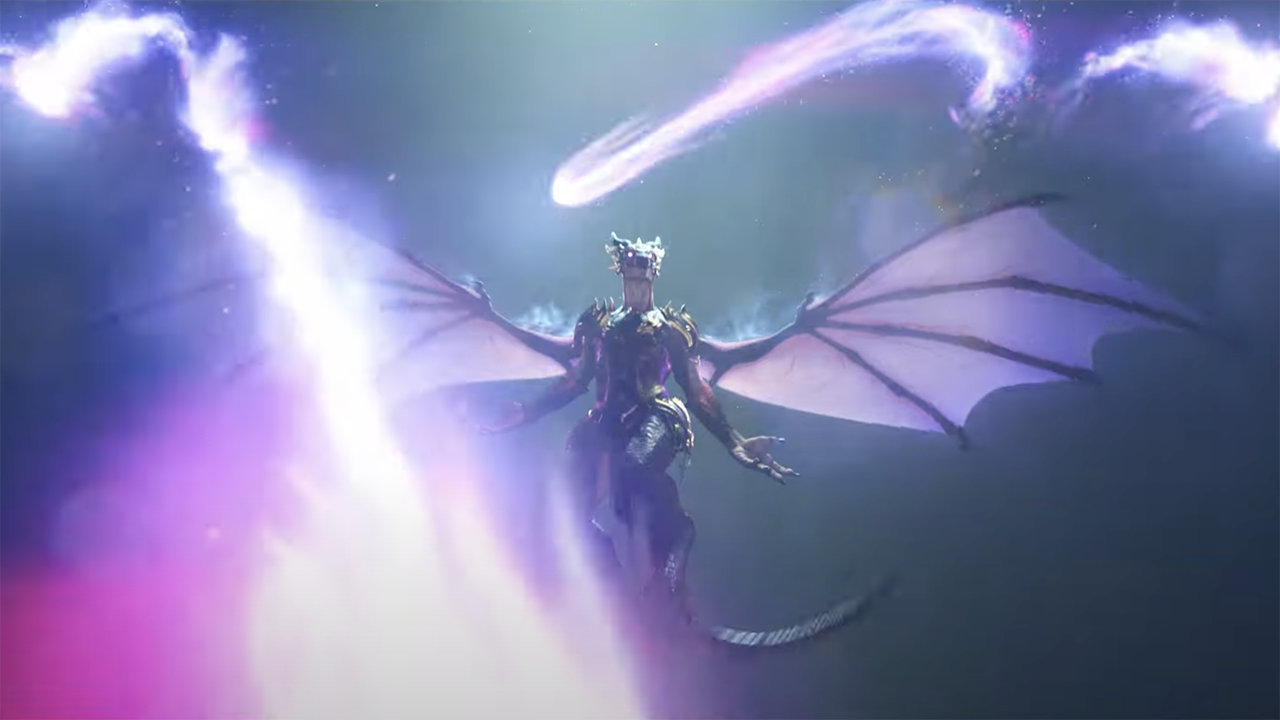
What skills do you use at your job the most? Do you prefer drawing, painting, modeling, animating, or another technique the most?
Max Anderson:
Animating is a big part of my job; I really enjoy it too. If I had to pick a second skill it would be modeling. Painting is something I’m still working on and need to be less scared of.
Ethan Zink:
One of our main pillars on the WoW VFX team is dedicated to creating painterly effects. As a result, the majority of effect textures you see in Dragonflight are painted by hand, with very little in the way of shader manipulation. In fact most of our process in general has very little to do in the way of procedural generation, which lends itself to WoW’s handcrafted look. As you can imagine this also means the VFX team ends up with extra painting practice.
Ronald Quach:
I find myself animating the most, to get the timing just right. Models and textures can be imported from previous effects, sometimes needing minor tweaks, but the animation typically needs the most work to bring it all together.
Kali Goss:
Painting and animation. I used to hate painting but now I prefer it. There's so much you can do with just a brush.
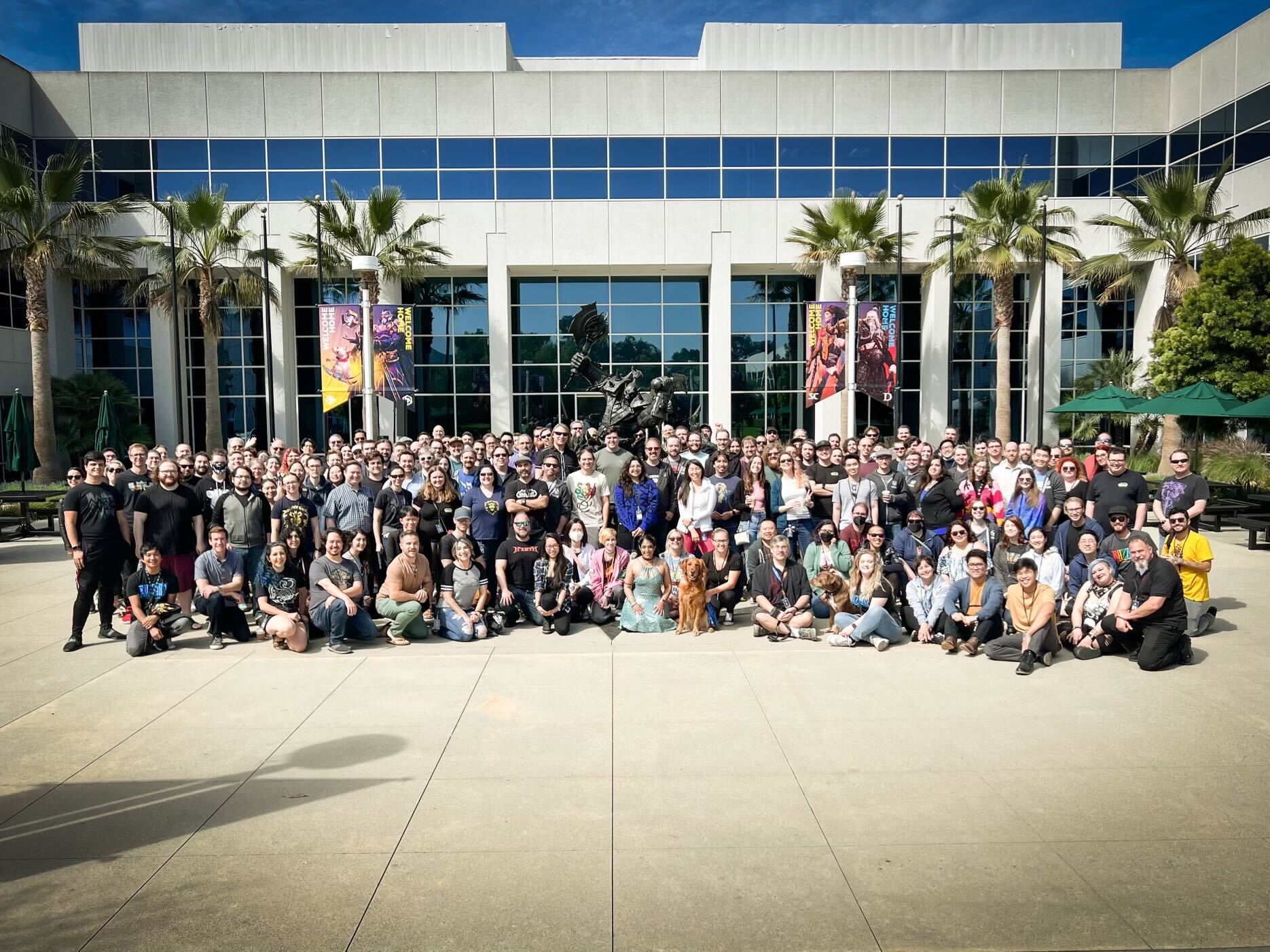 Image: Blizzard's Dragonflight team at the game's launch event.
Image: Blizzard's Dragonflight team at the game's launch event.
For anyone wanting to join your team, do they need to play WoW? If they don't play it much, will they be lost on the job?
Katie McAllister:
You definitely should be familiar with WoW on some level. The more exposure to the environments, the different races, and the VFX you have; the better off you will be.
I started out occasionally playing the game and now I play it a few times a week just to get familiar with new things in the game, and it’s super useful in getting familiar with studying VFX spells.
Ronald Quach:
I had no experience with WoW before applying. After I sent in my reel, I downloaded the game and did a trial until level 20. I also watched YouTube videos on different raids, dungeons, and hero abilities to get a better idea for what a WoW effect is. After getting the job, I was still overwhelmed by the massive library of effects, but new hires are always paired with a mentor, which helped tremendously.
Kali Goss:
Playing WoW is not a requirement, but it is helpful. Having a grasp of how the game works and the lingo makes it one less thing for a person to learn. I don't think a person would be lost as there are a lot of folks on the team who help those who are less familiar with the game.
Sarah King:
You should play the game if you plan on applying. You don’t need to be running Mythics and know everything about the game, but you should have at least played some. It’s a great way to show you`re interested and it’s good to understand the game you’re applying for.
Sarah Carmody
Before and during the application process, we completely understand that not everyone is an active player (and we don’t expect you to be). I’d recommend playing the game before any interviews, at least as just general interview advice. Even once you join our team, playing is optional but it absolutely does help.
Do you have any other tips for someone starting out their career as a real-time VFX artist?
Ethan Zink:
Tools aren’t as important as you think they are. Different tools come and go, morph as they’re updated, etc. So whatever tool you are comfortable with today will inevitably change or be replaced tomorrow. In addition to this, the studio(s) you’re applying to may use in-house tools you’ve never even seen before let alone practiced with. A better investment would be learning how to see the larger goal of a project and build up your fundamentals. Fundamentals (timing, color theory, painting, mood, gameplay) are applicable no matter what problem you find yourself trying to solve.
Katie McAllister:
Going in with a strong foundation will help you in the long run. If you’re brand new to everything VFX I’d say to focus on learning texturing, painting, modeling, and animation and timing before jumping into an engine since they can be a lot upon first glance.
Having more exposure to whatever element you’re working with helps you better understand VFX behaviors the more you study it. Experiment and see what you might like to work on style wise. I started out making realistic VFX and then switched into stylized VFX and found it more enjoyable!
If you reach the point where you’re ready to apply to your first VFX job, immerse yourself in the types of VFX that the studio is making.
Greg Tapper:
Don't hesitate to reach out to other FX artists! Never stop asking questions, even 10 years into making FX. So many VFX artists are willing to help and get excited by others passionate to learn. Make FX and post it everywhere! VFX Apprentice, Real-Time VFX, and even Twitter—ask for feedback everywhere. The community is your best resource for growth. Don't learn the hard way by slamming your head against a wall. Let others cushion the wall first!
Ronald Quach:
Take good notes and ask questions about anything that is unclear to you. Every studio will have their own tools and ways of doing things. If you run into any problems, do not hesitate to ask! Sometimes it can be solved with a single click!
Sarah King:
You can start playing around for free! Unity and Unreal are great programs to download and start learning. These both have systems and FX emitters to start playing with. Blender is a great free 3D modeling software and there are plenty of 2D or painting programs. There are also a lot of YouTube videos with breakdowns and tutorials.
Sarah Carmody:
Tools are important to learn and build comfort with, but making a great effect will hinge on much more basic artistic principles—silhouette, values, color harmony, balance, timing, etc. Can you tell what’s going on in your effect in a still screenshot? Does it still make sense if you convert it to greyscale? Are you being mindful where you direct the viewer/player’s eye throughout your effect? Are you conserving force, mass, momentum?
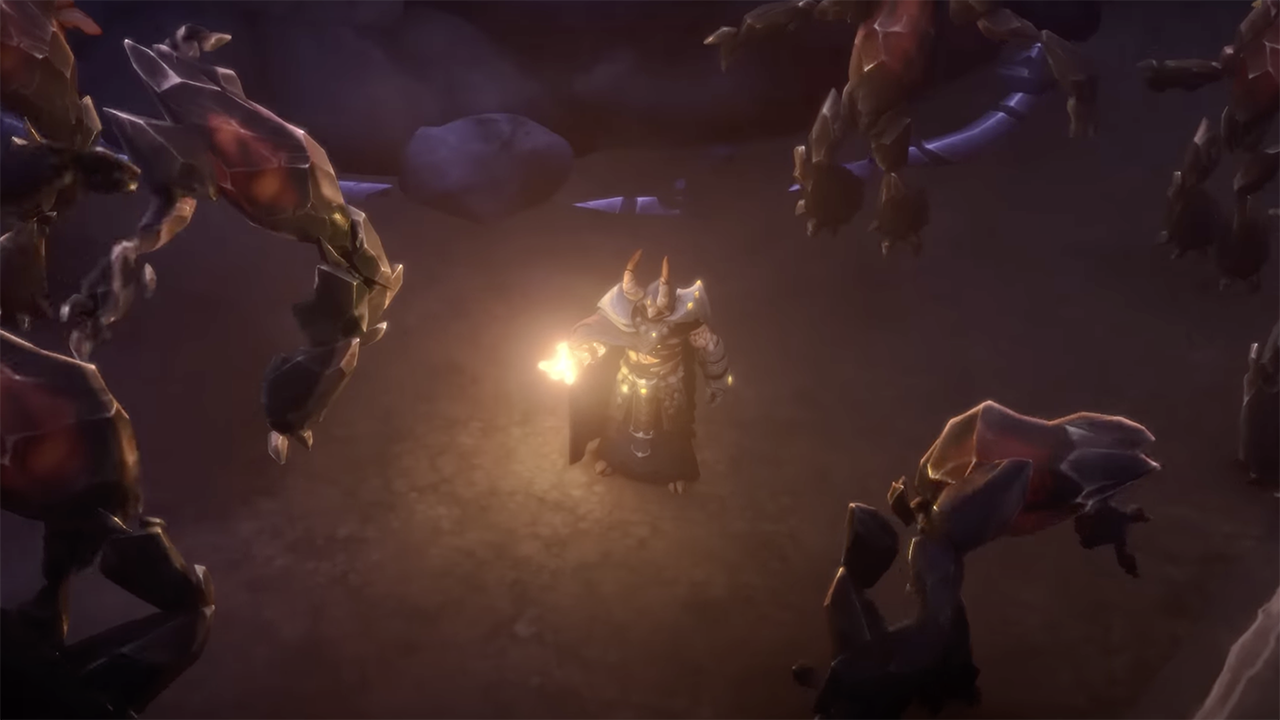
What needs to be in a new VFX artist's portfolio before they apply to your team?
Kali Goss:
I prefer to see some stylized work that shows an understanding of the principles of animation, some snappy timing, and good color work. Whatever the person is interested in, I will happily look at. I want to see whatever they're passionate about, be it a large set defining piece, or a few combat focused abilities, or even some bespoke environmental VFX.
Sarah Carmody:
Every game has different needs and the more relevant skills to the project that we see within your reel, the more likely we are to move forward. Painting ability, timing, and overall cohesion are important areas of focus for WoW, so I tend to pay attention to those when looking at reels.
Mostly though, I love to see anything that the artist was clearly passionate in making—it always shows through!
All Images via Blizzard Entertainment
Start Your VFX Apprenticeship
Begin your journey towards mastering FX for games and animation. Join VFX-A All Access and discover cutting-edge 2D, 3D, and real-time FX training.







